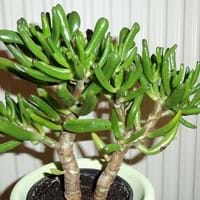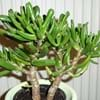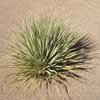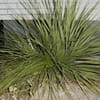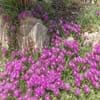Life Span
Perennial
Perennial
Type
Cactus or Succulent, Shrubs
Sedge or Rush
Origin
Southern Africa, South Africa
Japan
Types
Crassula portulaca,Crassula argentea
Not Available
Number of Varieties
Not Available
Habitat
Deciduous forests, Desert, Rocky Ridges, Semi desert
Lawn, shaded fields, Shaded sites
USDA Hardiness Zone
9-13
5-10
Sunset Zone
H1, H2, 8, 9, 12, 13, 14, 15, 16, 17, 18, 19, 20, 21, 22, 23, 24
3a, 3b, 4, 5, 6, 7, 8, 9, 14, 15, 16, 17, 18, 19, 20, 21, 22, 23, 24
Habit
Oval or Rounded
Clump-Forming
Flower Color
White, Light Pink, Ivory
Tan
Flower Color Modifier
Not Available
Bicolor
Fruit Color
Not Available
Brown
Leaf Color in Spring
Green, Olive, Dark Green
Dark Green, Gold
Leaf Color in Summer
Green, Olive, Dark Green
Dark Green, Gold
Leaf Color in Fall
Green, Olive, Dark Green
Dark Green, Gold
Leaf Color in Winter
Red, Olive, Dark Green, Bronze
Dark Green, Gold
Plant Season
Spring, Summer, Fall, Winter
Spring, Summer, Fall, Winter
Sunlight
Full Sun, Partial Sun
Partial shade, Full Shade
Growth Rate
Medium
Medium
Type of Soil
Loam, Sand
Clay, Loam, Sand
The pH of Soil
Neutral
Acidic, Neutral
Soil Drainage
Well drained
Well drained
Bloom Time
Early Spring, Spring, Early Winter, Winter, Late Winter
Late Spring
Tolerances
Drought
Drought
Where to Plant?
Container, Ground
Ground, Pot
How to Plant?
Budding, Leaf Cutting, Stem Planting
Rooted stem cutting, stem tip cuttings
Plant Maintenance
Medium
Medium
Watering Requirements
Allow soil to be completely dry in between waterings, Never Over-water
Needs more water during establishment, Water Deeply, Water in morning to avoid prompting diseases, Water in the early morning hours
In Summer
Moderate
Lots of watering
In Spring
Drought Tolerant, Average Water
Moderate
In Winter
Less Watering
Average Water
Soil pH
Neutral
Acidic, Neutral
Soil Type
Loam, Sand
Clay, Loam, Sand
Soil Drainage Capacity
Well drained
Well drained
Sun Exposure
Full Sun, Partial Sun
Partial shade, Full Shade
Pruning
Remove damaged leaves, Remove dead branches, Remove dead leaves
Prune to control growth
Fertilizers
All-Purpose Liquid Fertilizer
All-Purpose Liquid Fertilizer, Apply N-P-K, Less fertilizing
Pests and Diseases
Red blotch
Disease free, Insects, Red blotch
Plant Tolerance
Drought
Drought, Rocky Soil, Shade areas, Variety of soil types, Wet Site
Flowers
Showy
Insignificant
Flower Petal Number
Single
Single
Foliage Texture
Bold
Fine
Foliage Sheen
Glossy
Glossy
Attracts
Ants, Caterpillar
Aphids, Bugs, Mealybugs, Scale Insects
Allergy
allergic conjunctivitis, Dizziness, Mouth itching, Vomiting
Not Available
Aesthetic Uses
Beautification, Bonsai, Cottage Garden
Beautification, Borders, Ground Cover, Landscape Designing
Beauty Benefits
Acne, Making cosmetics, Natural Sunscreen, Nourishes scalp, Stops hair loss
Not Available
Environmental Uses
Provides ground cover, soil stabilisation
Air purification
Medicinal Uses
Acne, Antibacterial, Eczema, epilepsy, Gout, Laxative
Not Available
Part of Plant Used
Leaves, Sap, Stem
Leaves
Other Uses
Cosmetics, Used as Ornamental plant, Used for its medicinal properties
Not Available
Used As Indoor Plant
Sometimes
Yes
Used As Outdoor Plant
Yes
Yes
Garden Design
Container, Feature Plant, Foundation, Houseplant, Mixed Border, Rock Garden, Wall, Tropical
Container, Edging, Groundcover, Mixed Border, Rock Garden / Wall
Botanical Name
CRASSULA ovata
CAREX hachijoensis 'Evergold'
Common Name
Jade Money Plant
Carex oshimensis
Carex morrowii
In Hindi
जेड पौधा
Japanese Sedge
In German
Geldbaum
japanische Segge
In French
Crassula ovata
Japanese carex
In Spanish
Crassula ovata
juncia japonesa
In Greek
Crassula ovata
japanische Segge
In Portuguese
Crassula ovata
Sedge japonês
In Polish
Grubosz jajowaty
japoński turzyca
In Latin
Crassula ovata
Sedge Italica
Phylum
Magnoliophyta
Tracheophyta
Class
Magnoliopsida
Magnoliopsida
Family
Crassulaceae
Cyperaceae
Clade
Dicotyledonous
Angiosperms, Commelinids, Monocots
Tribe
Not Available
Not Available
Subfamily
Crassuloideae
Not Available
Season and Care of Jade Plant and Japanese Sedge
Season and care of Jade Plant and Japanese Sedge is important to know. While considering everything about Jade Plant and Japanese Sedge Care, growing season is an essential factor. Jade Plant season is Spring, Summer, Fall and Winter and Japanese Sedge season is Spring, Summer, Fall and Winter. The type of soil for Jade Plant is Loam, Sand and for Japanese Sedge is Clay, Loam, Sand while the PH of soil for Jade Plant is Neutral and for Japanese Sedge is Acidic, Neutral.
Jade Plant and Japanese Sedge Physical Information
Jade Plant and Japanese Sedge physical information is very important for comparison. Jade Plant height is 60.00 cm and width 60.00 cm whereas Japanese Sedge height is 20.30 cm and width 30.50 cm. The color specification of Jade Plant and Japanese Sedge are as follows:
Jade Plant flower color: White, Light Pink and Ivory
Jade Plant leaf color: Green, Olive and Dark Green
Japanese Sedge flower color: Tan
- Japanese Sedge leaf color: Dark Green and Gold
Care of Jade Plant and Japanese Sedge
Care of Jade Plant and Japanese Sedge include pruning, fertilizers, watering etc. Jade Plant pruning is done Remove damaged leaves, Remove dead branches and Remove dead leaves and Japanese Sedge pruning is done Prune to control growth. In summer Jade Plant needs Moderate and in winter, it needs Less Watering. Whereas, in summer Japanese Sedge needs Lots of watering and in winter, it needs Average Water.
